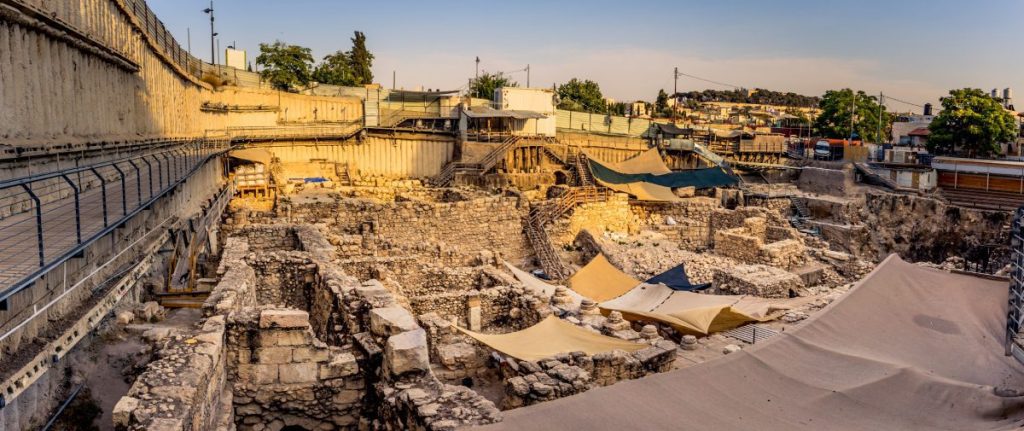Charles Warren was a British officer, engineer, and archaeologist who contributed significantly to exploring and surveying the Land of Israel in the 19th century. His work was instrumental in uncovering historical sites, mapping the region, and advancing our understanding of the ancient landscape. Let’s delve into Charles Warren’s accomplishments and his impact on the field of archaeology:
Archaeological Excavations in Tel Jericho

Exploration and Mapping:
Charles Warren’s expertise as a military engineer served him well in his archaeological pursuits. In the late 1860s and early 1870s, he was involved in a series of expeditions to explore and survey various regions of the Holy Land, including Jerusalem, Hebron, and the surrounding areas. His detailed surveys and maps were accurate and invaluable for subsequent archaeological and historical studies.
Montagu Parker Expedition

Credit: David Shankbone, CC BY-SA 3.0, via Wikimedia Commons
The Exploration of Jerusalem:
One of Warren’s most notable achievements was his exploration of Jerusalem, particularly its underground passages and water systems. He excavated in the ancient city beneath the Temple Mount to uncover hidden tunnels, cisterns, and other architectural features. His work shed light on the city’s complex history and infrastructure.
Warren’s Shaft and Warren’s Gate:
Furthermore, Warren’s explorations led to the discovery of a vertical shaft near the Gihon Spring, known as “Warren’s Shaft.” This discovery revealed an ancient water system that allowed access to the spring from within the city walls, a crucial resource for inhabitants during times of siege. Additionally, he identified a massive stone structure that came to be known as “Warren’s Gate,” an important archaeological find near the southwestern corner of the Temple Mount.
Jerusalem Ultimate Guide
The Temple Mount Survey:
So, one of Warren’s most significant contributions was his involvement in the “Temple Mount Survey” conducted by the Palestine Exploration Fund in the 1860s. Furthermore, this survey included detailed measurements and drawings of the Temple Mount, which provided valuable information about the layout and architecture of the site.
Jerusalem Archealogical Tour

Archaeological Methodology:
Furthermore, Warren’s work in the Holy Land was characterized (relatively to those days) by meticulous attention to detail and a scientific approach to archaeology. His methods of surveying, mapping, and documenting archaeological sites set a standard for subsequent generations of archaeologists.
Legacy and Impact:
So, Charles Warren’s contributions laid the groundwork for further regional archaeological exploration and research. His maps, surveys, and reports influenced our understanding of the historical geography of the Holy Land. His discoveries, particularly related to Jerusalem’s water systems, provided insights into the practical considerations of urban planning in ancient times.
Last, Charles Warren’s legacy resonates in archaeology and historical studies. His dedication to uncovering the secrets of the past and his commitment to meticulous documentation have left an indelible mark on our understanding of the ancient landscape of the Land of Israel.

